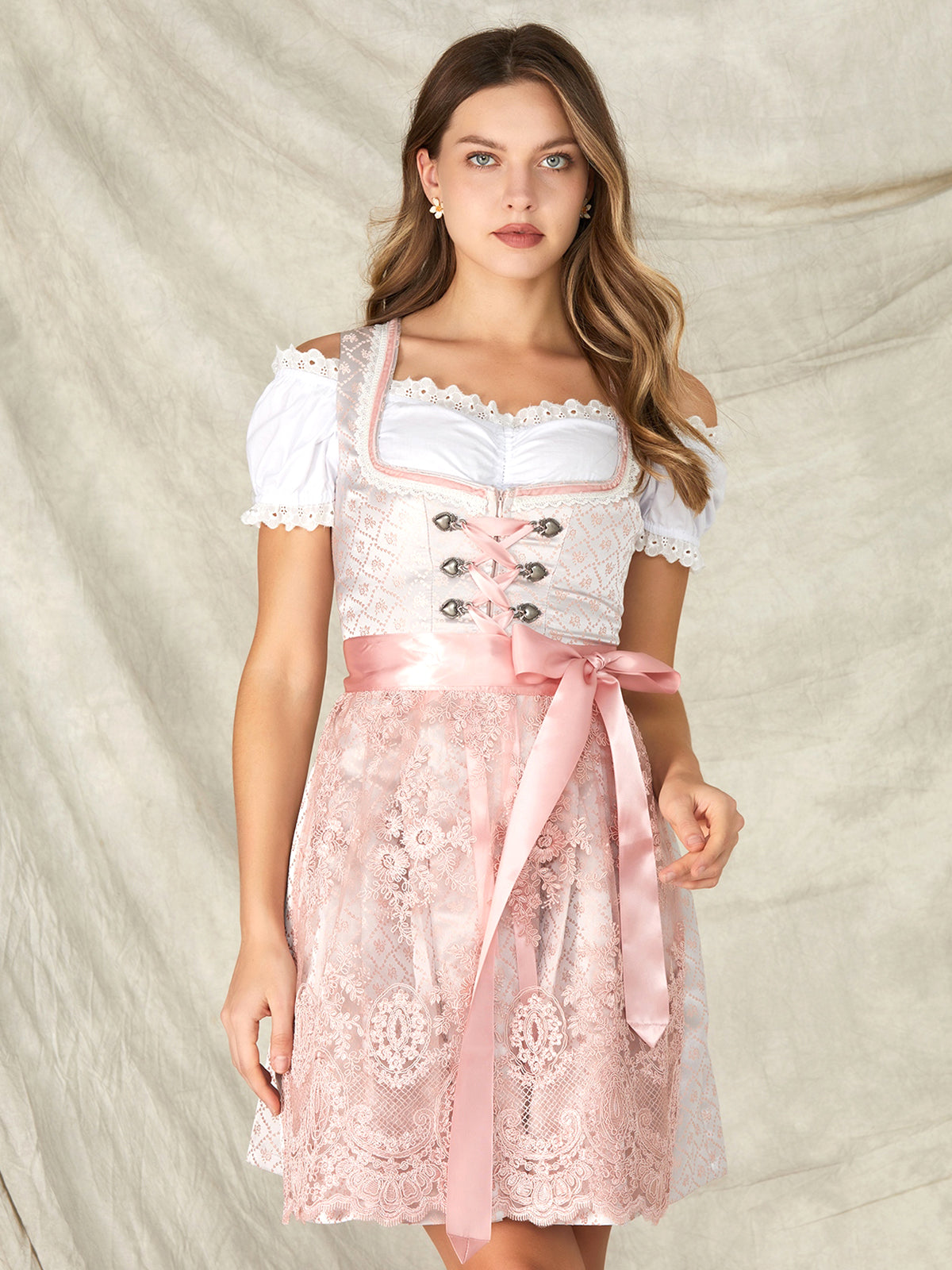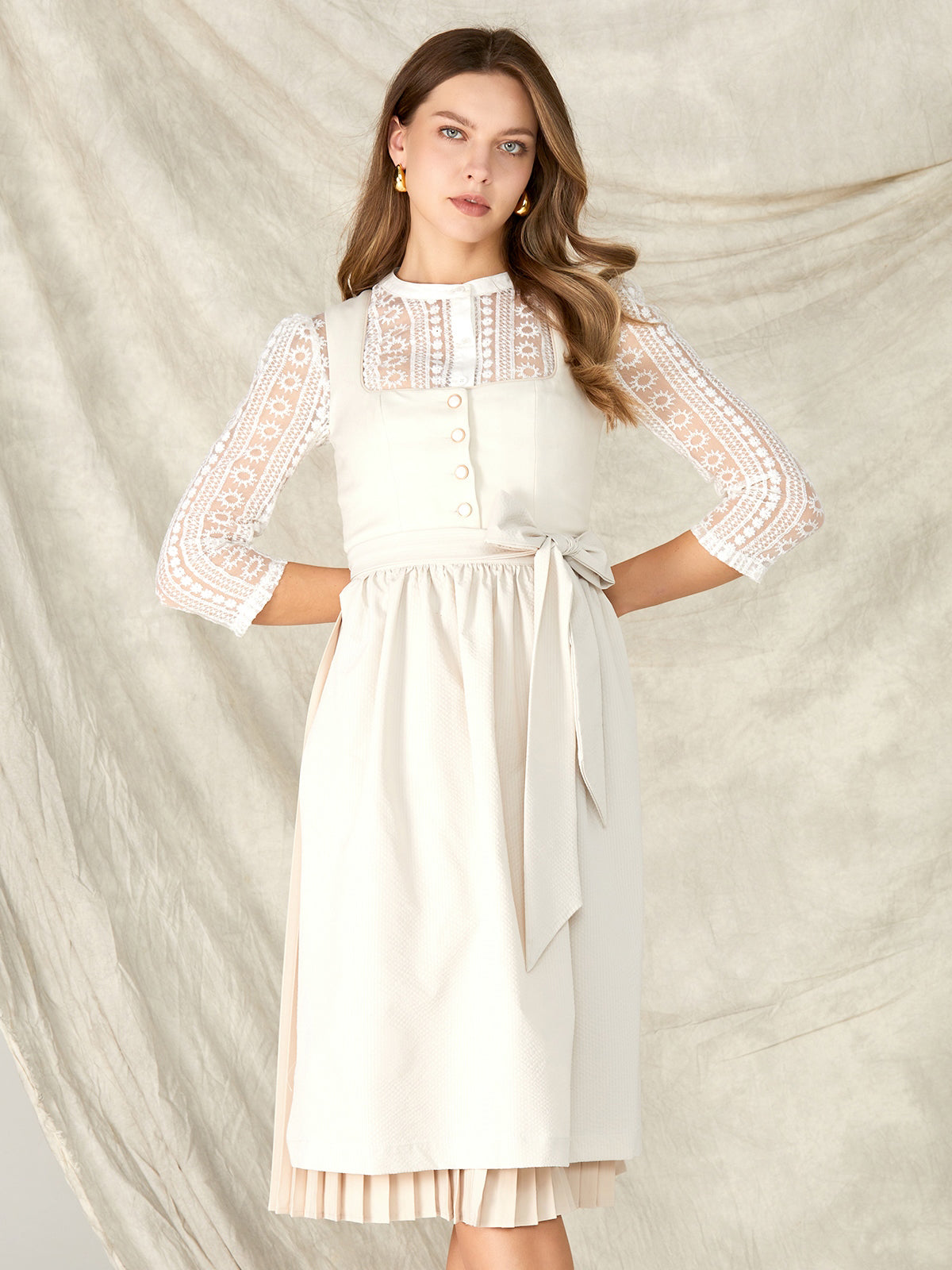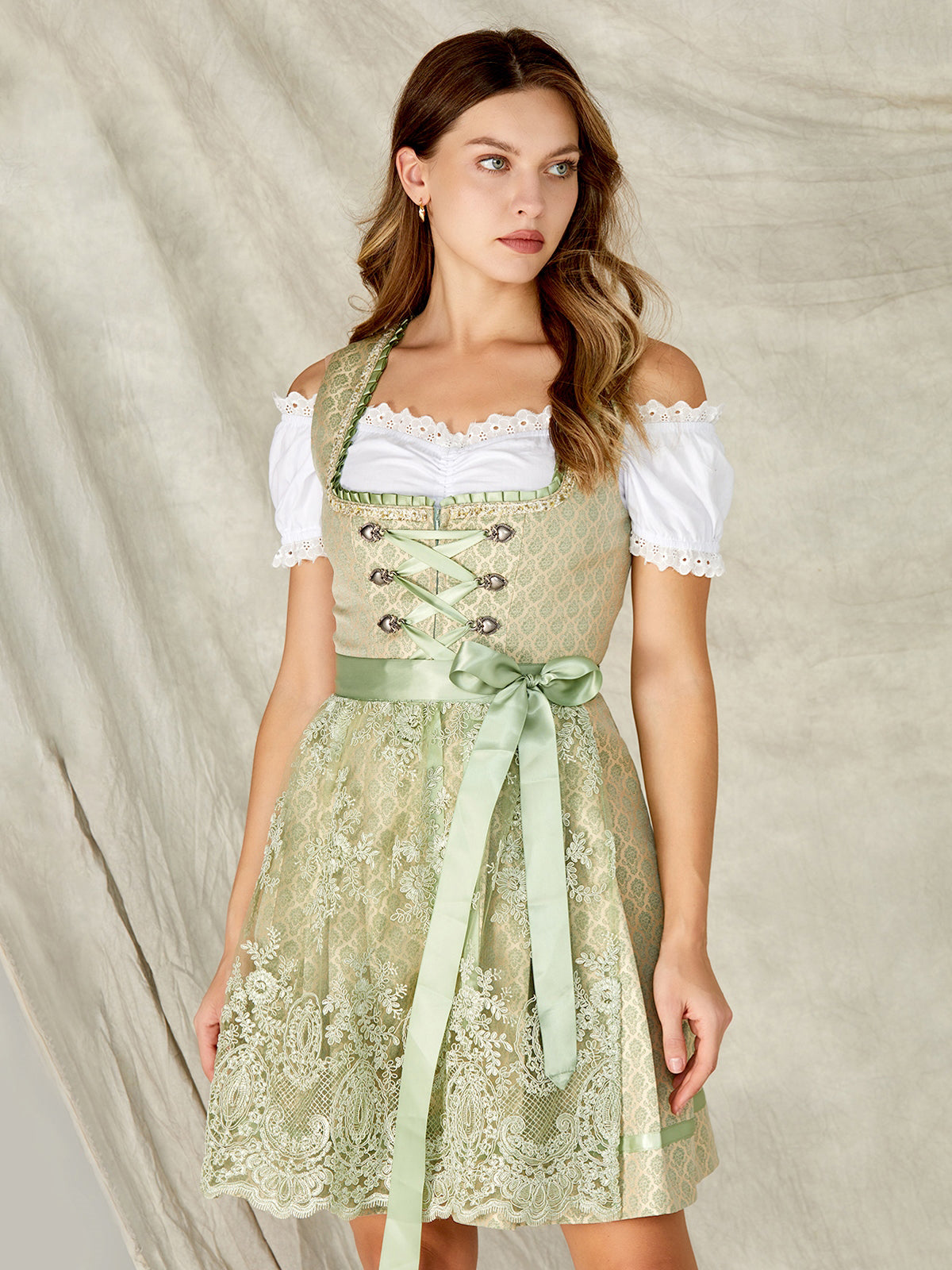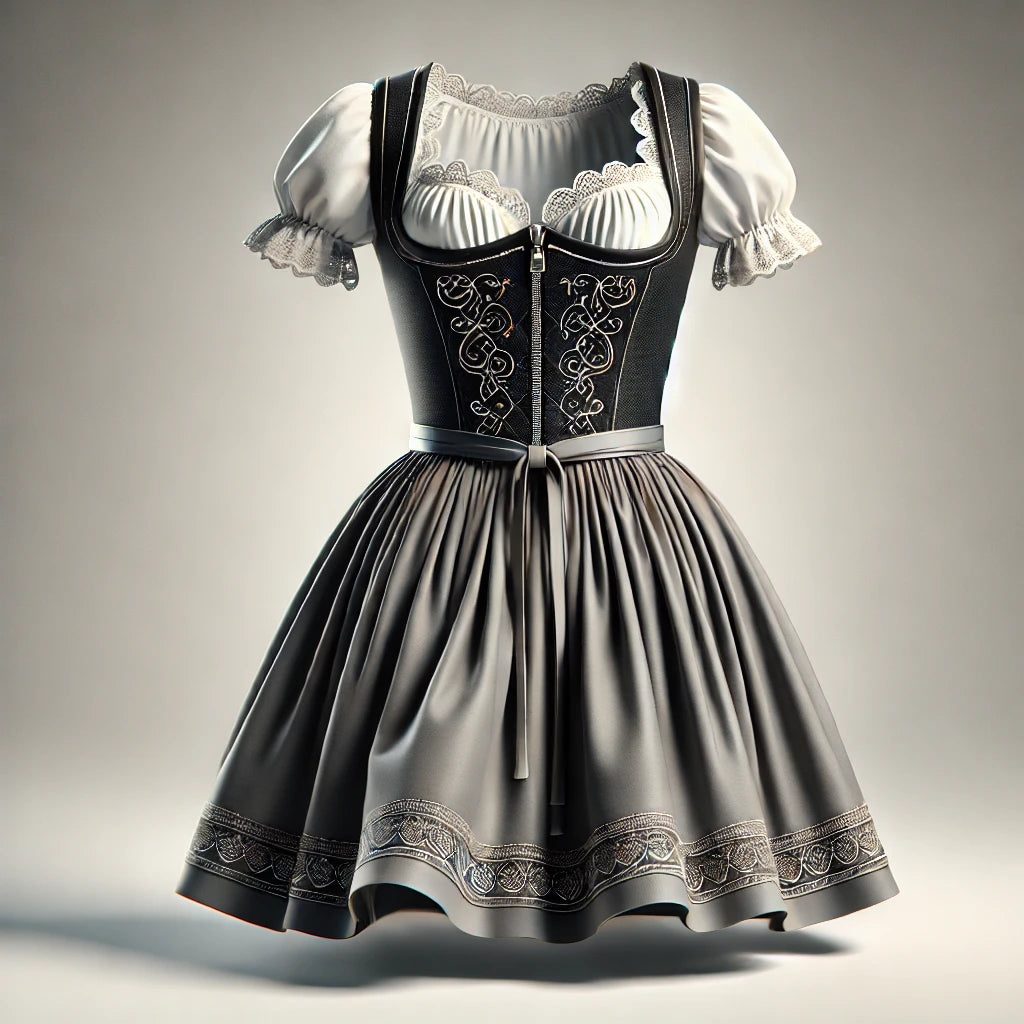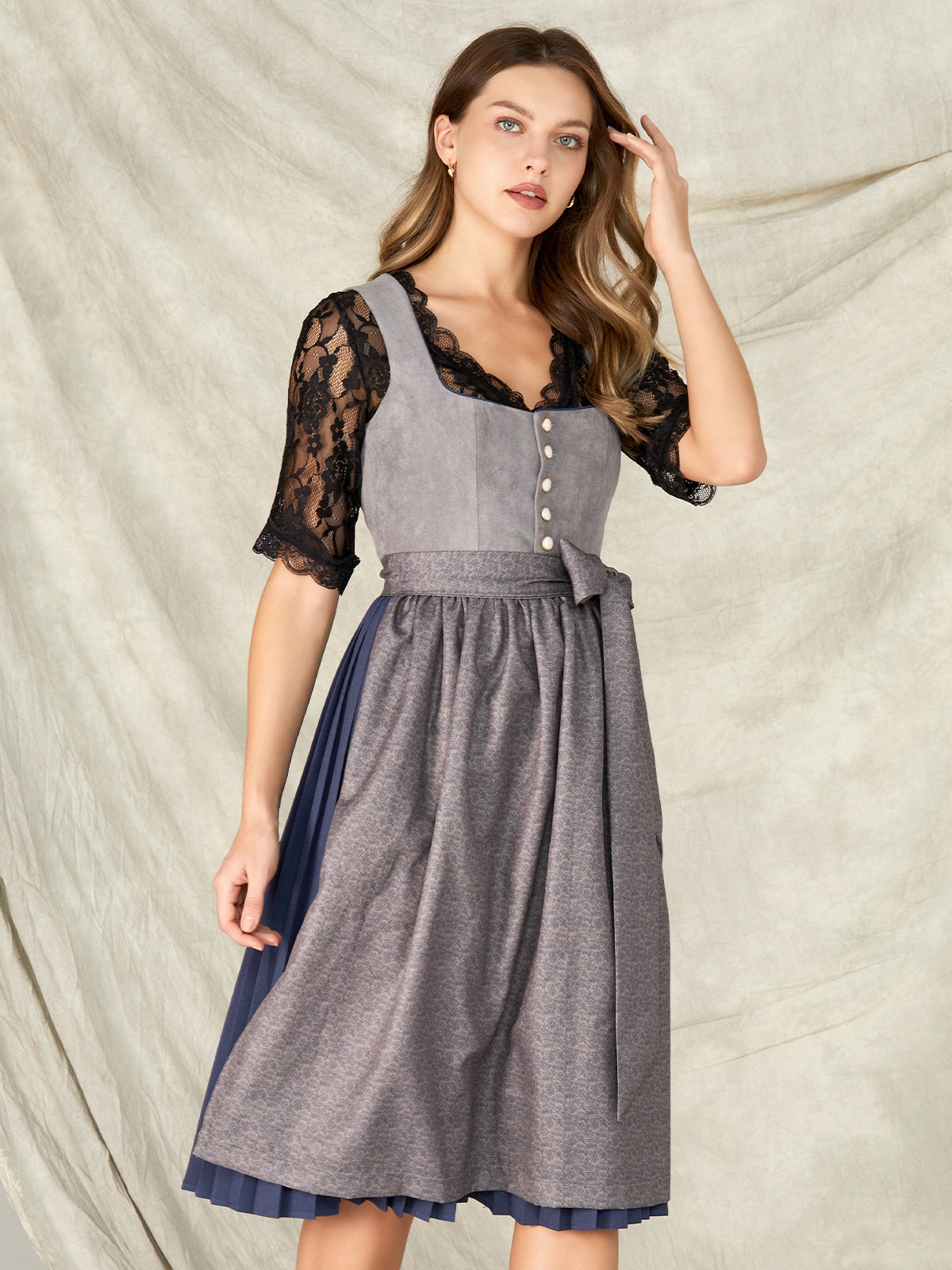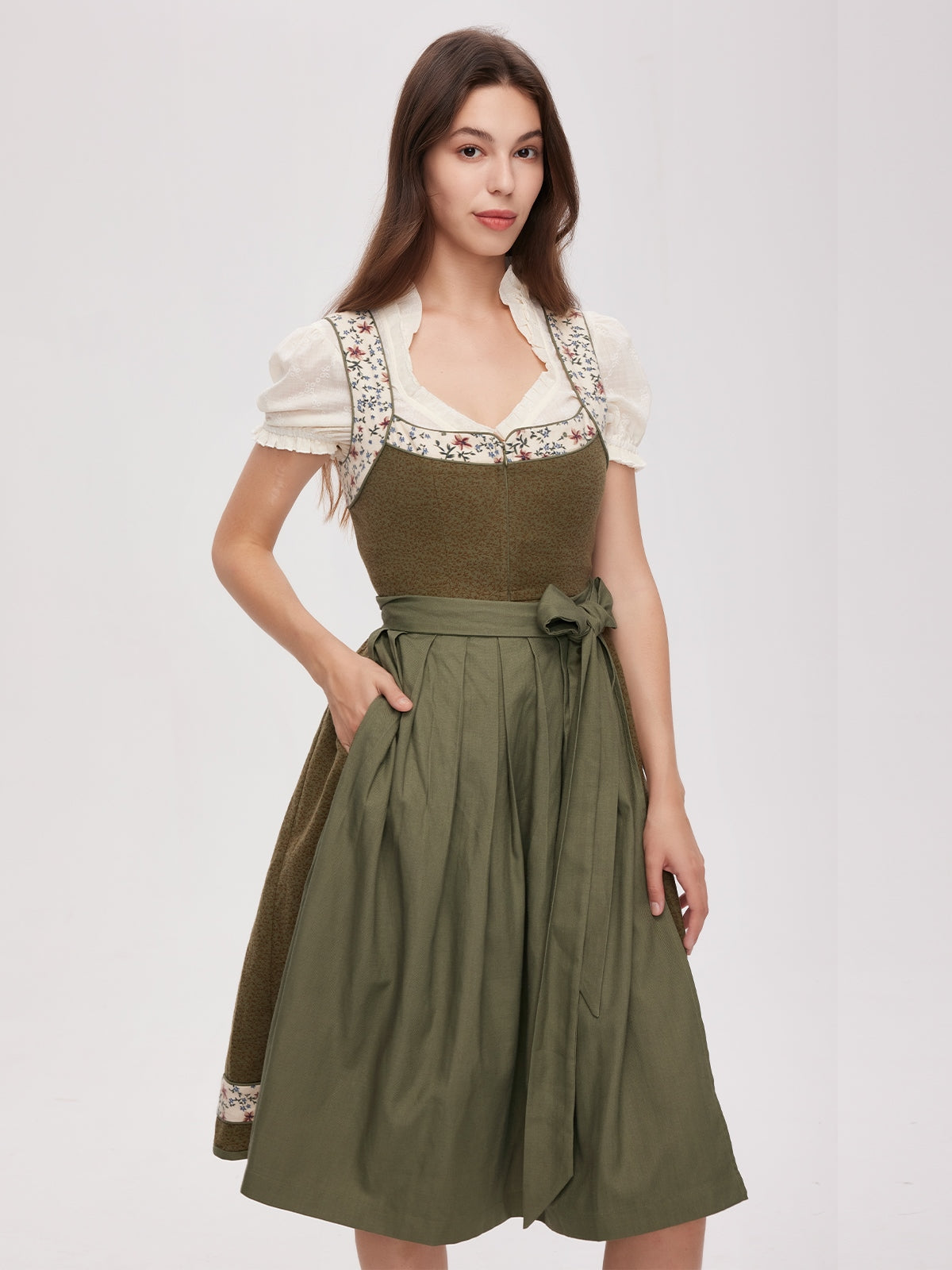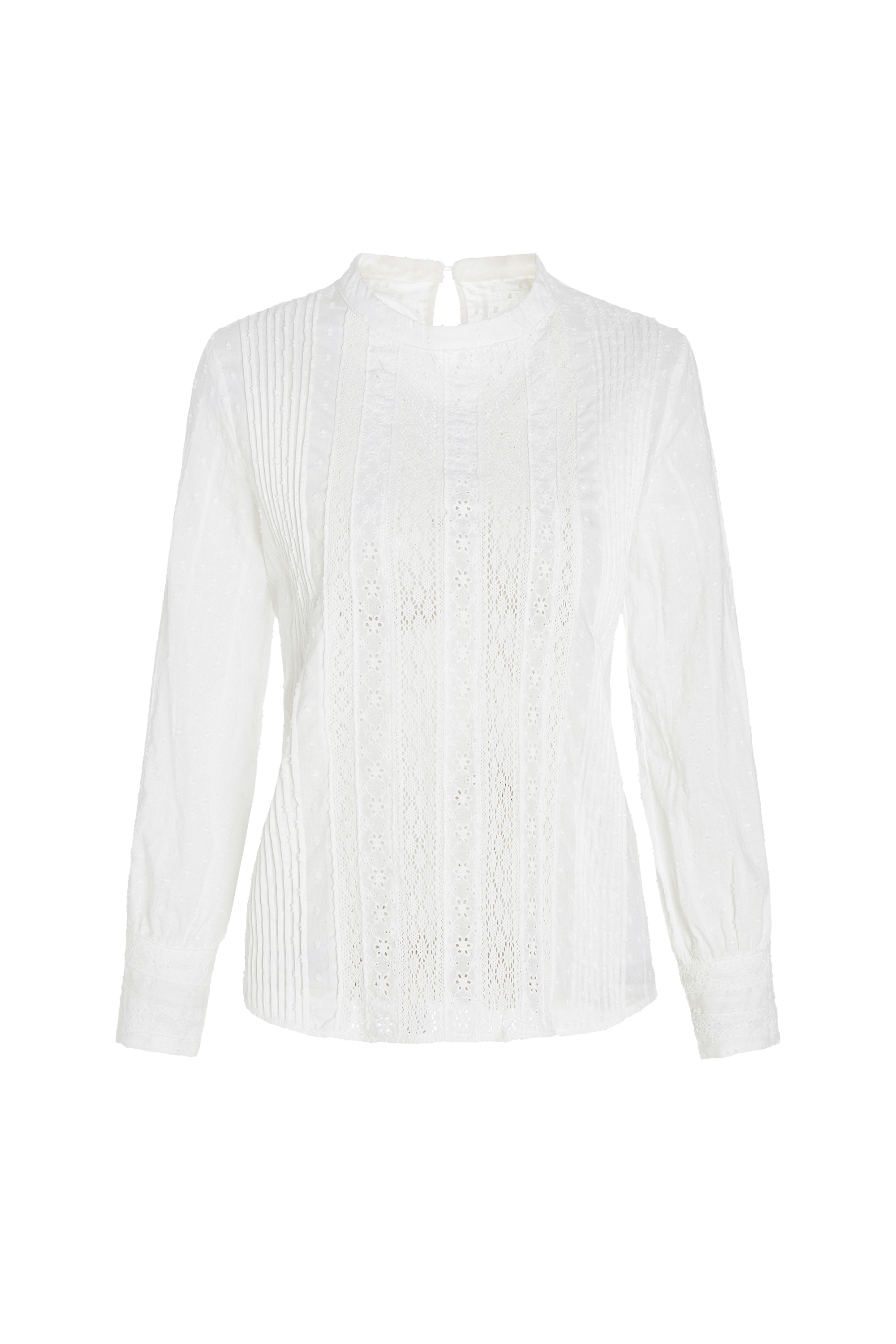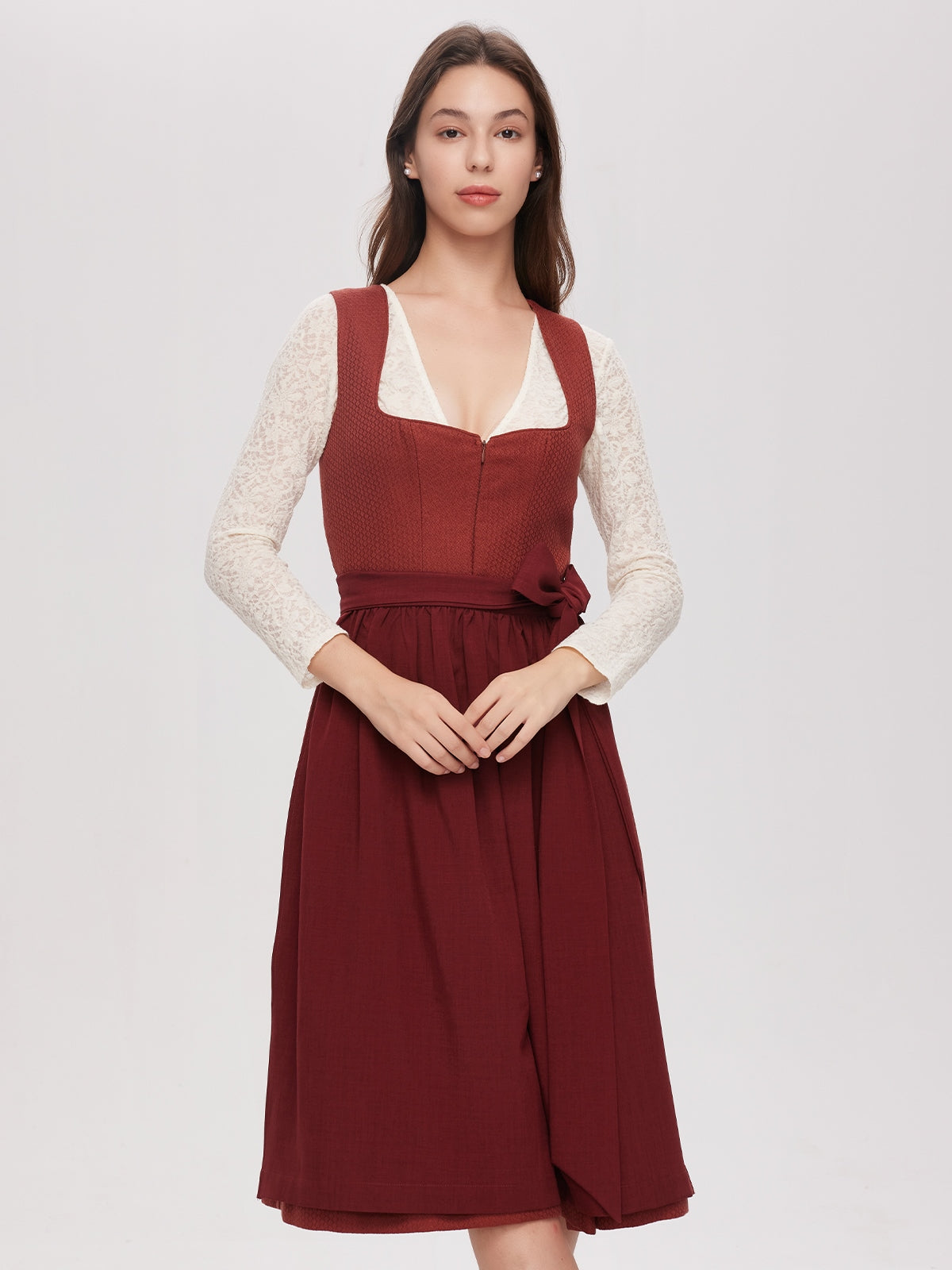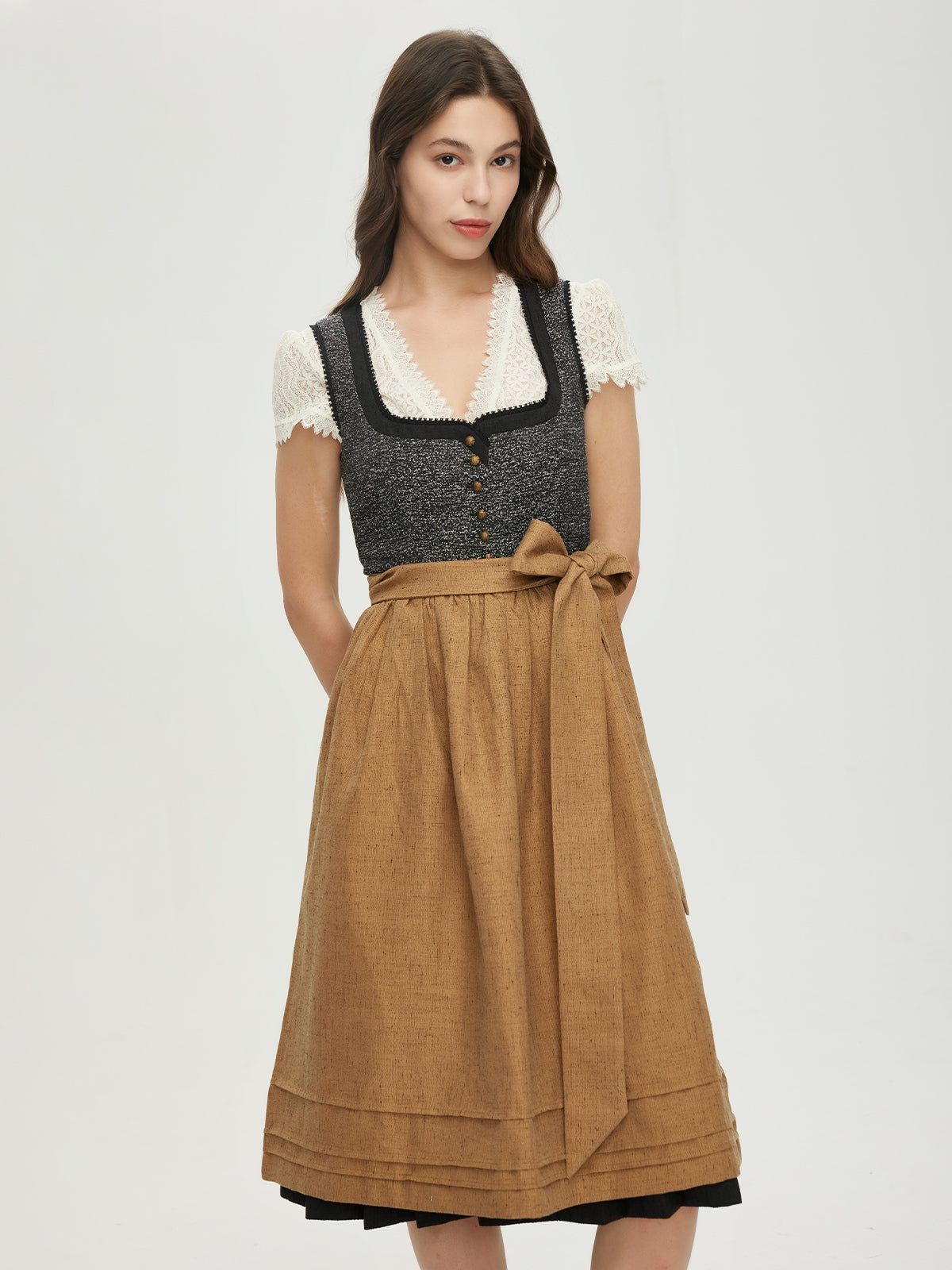After Lina realized that her dirndl with a front zipper was not only a fashion choice, but also a personal one, she felt liberated. Her initial uncertainty about whether this modern choice would disappoint her family's traditional expectations gave way to a newfound confidence. The zipper turned out to be just the right detail—a symbol of the combination of functionality and style that reflected Lina's life.
But with this new sense of freedom came a new thought: Was it really possible to have both? Could she reconcile her love of tradition with her desire for comfort and modern details? This thought accompanied her as she prepared for the next big occasion, where she would once again appear in her front-zipper dirndl.
The front zipper: A revolution in traditional costume fashion?
A
dirndl with a front zipper is not only practical in traditional costume, but also a real eye-catcher. Many women who appreciate traditional costumes have wondered whether it's possible to replace the often elaborate fasteners of a classic dirndl with more modern and practical versions. The front zipper offers precisely this solution without compromising the aesthetics of the traditional look.
The zipper brings a new dynamic to the dirndl. It creates a smooth silhouette and is easier to handle than traditional buttons or hook closures. The dirndl zipper in the front is a real relief, especially for women who wear their dirndl often and want to get it on and off quickly.
A hidden detail that changes everything
Lina's decision to wear a dirndl with a zipper down the front had far-reaching implications than she initially imagined. What began as a simple fashion choice evolved into a symbol of her personal freedom and the ability to break free from outdated ideas. She realized that she lived in a modern world where traditions could be valued but also reinterpreted.
But like every big step in life, this one also led to unexpected tensions. A few weeks after the family celebration, a wedding was coming up, and Lina once again opted for her front-zipper dirndl. She wanted to look not only practical but also stylish, and the dirndl was the perfect combination of both worlds. But when she arrived at the wedding venue, she immediately sensed a certain tension in the air.
The surprise: An unexpected encounter
Lina was just greeting the wedding guests when she ran into her old friend Sarah. Sarah had always been someone who honored traditions and enjoyed classic fashion. Lina still remembered how Sarah had always insisted in the past that a dirndl had to be worn "according to the old rules."
When Sarah noticed the
dirndl's front zipper , she grimaced slightly. "Interesting choice," she said with a hint of skepticism in her voice. "I wouldn't have expected you to choose a zipper. Is that still traditional?"
Lina remained calm. She had expected such a reaction. "It's practical and looks good," she replied pleasantly. "I think it suits me perfectly."
Sarah gave a slightly forced smile and quickly changed the subject, but Lina could sense that her friend disagreed with her choice. This moment reminded her of the conflicts she had already experienced with her family, and she felt the insecurity rising within her once again.
The inner conflict: tradition versus modernity
After meeting Sarah, Lina thought long and hard about her decision. Was the front zipper dirndl really a good choice? Or should she have opted for a more traditional model to meet the expectations of those around her?
But then she remembered the moment she first put on the dirndl. The lightness, comfort, and elegance had immediately won her over. The zipper made her life easier, and at the same time, she looked just as stylish in it as in any other dirndl. It wasn't just about what others thought, but about what worked for her.
Lina realized she didn't have to choose between tradition and modernity. She could have both: the roots of traditional costume and the comfort offered by modern fashion. Her front-zip dirndl was the perfect compromise.
The turning point: A new insight
After the wedding, Lina talked to her mother about the situation. "I know some people don't consider the zipper traditional," she began, "but I feel comfortable in it, and that's what matters."
Her mother smiled gently. "Lina, you grew up in a time where traditions are valued, but there's also room for innovation. You don't have to do everything the way you used to. If you feel comfortable in this dirndl, then it's the right one for you."
These words gave Lina the validation she needed. It wasn't the zipper that defined the dirndl, but the way she wore it and how she felt in it. She had freed herself from the opinions of others and now knew she could forge her own path in the fashion world.
The conclusion: A dirndl that connects
Lina's journey shows that fashion is more than just clothing. A
dirndl with a front zipper can be not only a practical detail, but also a symbol of self-determination and modern elegance. For many women, the zipper offers a way to preserve tradition while taking advantage of modern fashion.
The dirndl's front zipper offers the comfort and functionality many women seek without sacrificing the classic aesthetic of a dirndl. For Lina, the zipper was a sign that she could forge her own path—between tradition and modernity, between comfort and style.
In a world where traditions are constantly evolving, the front-zip dirndl is a perfect example of how to combine the best of both worlds. It shows that fashion doesn't have to be rigid, but flexible and adaptable—just like the women who wear it.

